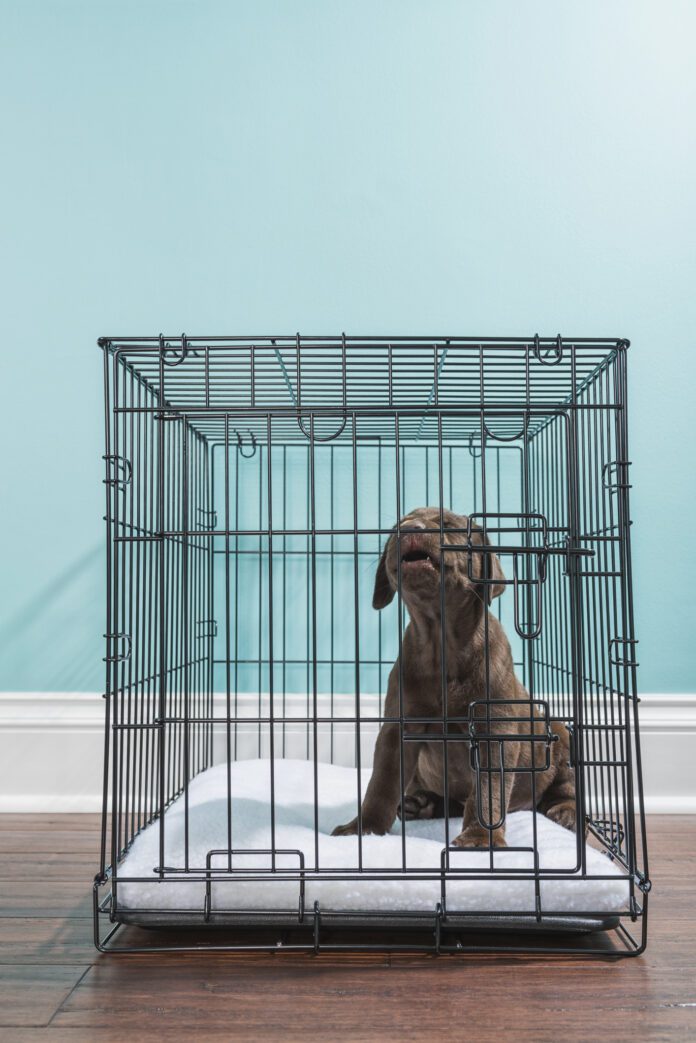It can be pretty darned annoying when your dog whines or cries at night, keeping you from getting enough sleep! But as annoying as it is for you, think about it from your dog’s perspective: she’s crying because she’s in distress. The key to ending the fussing is to ease her distress.
In years past, dog training professionals counseled clients to let the dog cry it out. “If you go to them,” we said, “you’ll reinforce them for crying and they’ll just learn to cry longer and harder.”
This was very bad advice. I suspect many dogs with mild separation-related stress had their anxieties turned into pathological separation anxiety by having their distress cries ignored.
I was guilty of giving this bad advice myself on occasion in the past (a long time ago). But when we know better we do better, and we teach better. Now we know that a dog who cries for longer than just a few minutes is trying to tell us something. Most often she is telling us that she is in distress, and she is crying out for help. This dog needs soothing and relief from her stress, not ignoring.
What to Do with a Crying Dog
The first thing you need to do with your whining, crying dog is to comfort her. Remove her from the situation that’s causing her distress and do whatever you need to do to alleviate her stress. Pet her. Hold her. Lie on the floor with her. Speak softly to her. Play soft music. Massage. If she’ll play, play with her.
Then address the environment that’s causing her distress by using management and behavior modification. The most common cause of continuous crying is separation-related behavior. If you have a dog who’s whining and crying all night, I’d bet you’ve probably got her shut away from you in another room, perhaps crated. Bring her into your bedroom. Then work with a force-free professional to address the separation distress. (See “Separation Anxiety in Dogs: Symptoms and How to Modify the Behavior.”)
Generalized anxiety can also be a cause of persistent vocalization. Again, management is in order to reduce your dog’s exposure to the anxiety-causing sights, sounds, or other stimuli, along with modification to help change your dog’s perception of those stressors.
Your dog might also be in distress as a result of a medical condition of some kind, so a full veterinary workup is in order if you can’t identify other obvious reasons for her distress vocalizations.
For persistent vocalizing, especially if it’s determined to be anxiety-related, anti-anxiety medications may be appropriate – either short-acting or long-acting, depending on the circumstances. You’ll want to have this discussion with your behaviorally knowledgeable veterinarian or a veterinary behaviorist. Do it sooner, rather than later. For an anxious dog, medication should be a first-line defense not a last resort.
Help Your Crying Dog
Bottom line – your crying dog is in distress and calling out to you for help. Help her. It’s what you would want someone to do for you.





